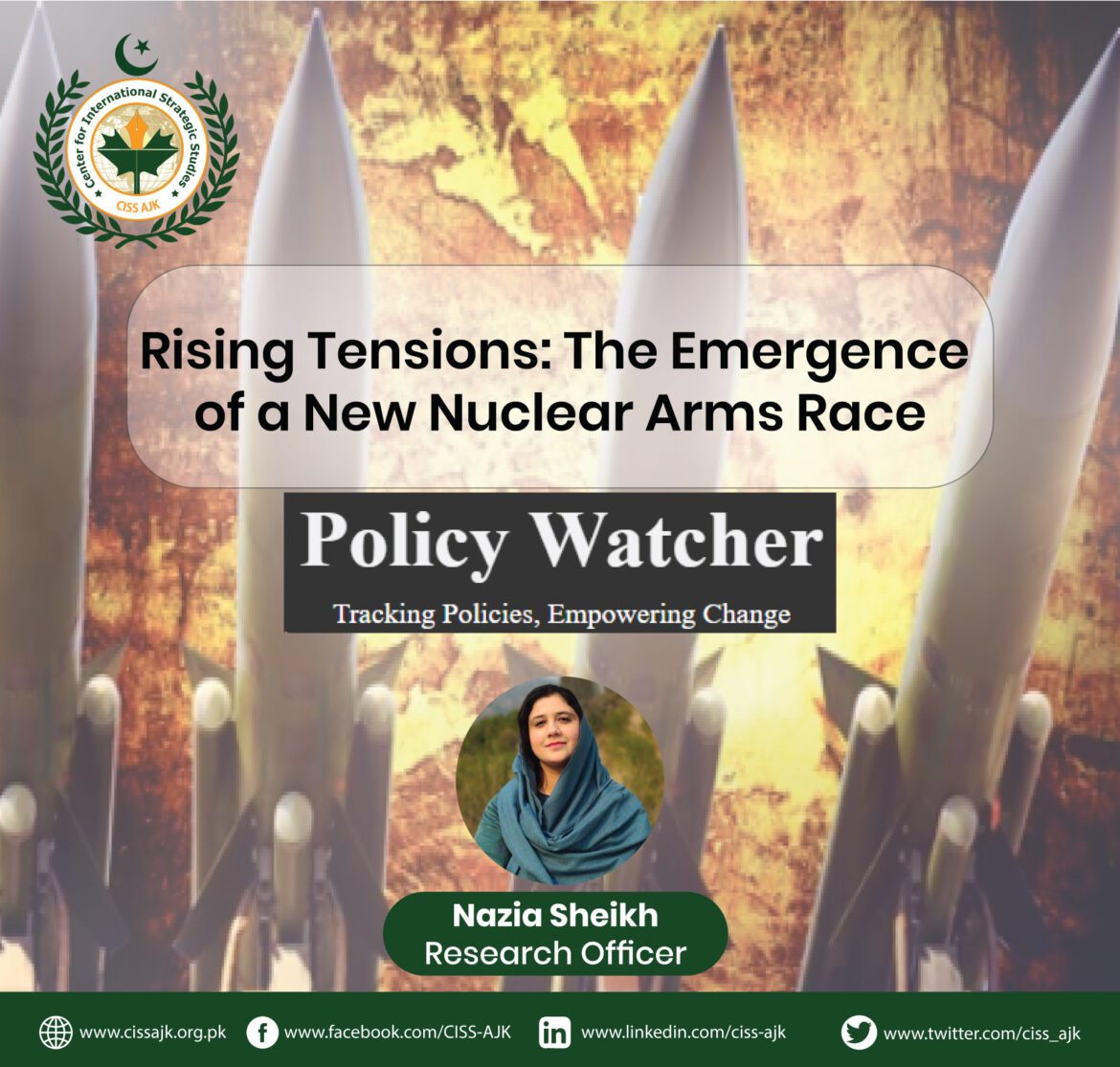423
The start of the New Year 2024 was distinguished by several wars in Africa, Europe, and the Middle East; human-caused environmental and climate change; and worries about democratic regression, economic strain, and social unrest of the previous year. A record number of parliamentary and national elections in 2024 herald a significant unpredictable year. The existential fear of nuclear weapons looms over humanity amid escalating problems, like a persistent, threatening, and silent mist. As written by journalist Jon Letman; Russia, Israel, the United Kingdom, Pakistan, and the United States are the five nuclear-armed nations that are currently engaged in active military engagements with another nation.
The nine nuclear-armed countries in the world currently possess about 12,500 nuclear weapons (including those that are pending dismantlement). While the total amount has significantly decreased since reaching a peak of over 70,000 warheads in the mid-1980s, each of the nine countries is modernizing or enhancing its arsenals. They invested around $83 billion in nuclear weapons in 2022.
When nuclear-armed countries aren’t retiring and dismantling their aging arsenals, they are modernizing, repurposing, or redesigning them to stay functional. In the next 30 years, the US is expected to invest up to $2 trillion in modernizing its nuclear triad—bombers, submarines, and long-range ballistic missiles. Right now, the nine countries that possess nuclear weapons are updating or growing their arsenals.
China’s nuclear arsenal is expanding quickly, despite still being far less than that of the US or Russia, with about 500 warheads. The possibility of a nuclear conflict is further highlighted by the current hostilities between China and Taiwan, North Korea and South Korea, and India and Pakistan, three nuclear neighbors.
John Erath, senior policy director at the Centre for Arms Control and Non-Proliferation, stated that “the possibility of nuclear war is very small,” but he also quickly adds that it is impossible to overlook the potentially disastrous implications of even “limited use” of nuclear weapons. Russia is using its nuclear weapons as a political instrument to discourage other nations from assisting Ukraine in a “very deliberate and controlled manner.” Erath stated that nuclear blackmail would become commonplace, as a tool of statecraft if the conflict ended in a way that allowed Russia to claim some degree of success. This would greatly encourage the country to acquire nuclear weapons. He continued to say that the outcome of the war in Ukraine may establish a pattern for global security dynamics for the rest of the twenty-first century.
President Vladimir Putin stated in the summer of 2023 that Russia had sent short-range nuclear weapons to Belarus, an ally. He justified the action by citing the US’s long-standing practice of staging nuclear weapons in five NATO countries. It is anticipated that maybe in 2024, 100 brand-new B61-12 American nuclear gravity bombs will be stationed on NATO sites. With the United States increasing yearly spending on nuclear modernization programs. Russia declared in February 2023 that it would no longer be taking part in the New Strategic Arms Reduction Treaty, which was designed to place restrictions on Russian and American missiles until early 2026. Russia’s Duma decided to revoke Moscow’s ratification of the Comprehensive Nuclear Test Ban Treaty in October 2023. Similar to the US, Russia is still a party to the agreement. There have been rumors of increased activity at nuclear test sites in China and Russia, despite Putin’s declaration that Russia won’t resume nuclear testing until the US does.
A three-way nuclear weapons race seems like a real possibility, and the international arms control framework is in serious peril. Redoubling efforts to control weaponry could prevent this and limit the possibility of nuclear war. Ideal actions consist of: First, New START should be fully implemented again by the US and Russia right away. This would assure both parties that the other is abiding by all of the treaty’s numerical limitations (at least until February 2026, when the treaty expires according to its text), and it would also serve as a basis for talks on a replacement deal.
Second, talks on topics related to strategic stability between the US and Russia should be continued. That conversation should include a variety of topics, including what kind of arms control agreement would come after New START and if it would cover strategic nuclear weapons or, better yet, all nuclear weapons held by the US and Russia. Long-range conventional strike systems and missile defense are two other topics that should be covered in the conversation.
Third, China ought to consent to a more official discussion about its expanding nuclear arsenal with the US. US authorities should be ready to address China’s worries regarding US missile defense and conventional strike weapons. Fourth, Moscow wants to address the nuclear forces of the United Kingdom and France, while Washington seeks to engage China. The United States, Russia, China, France, and Britain, collectively known as the Permanent Five of the UN Security Council, have been discussing nuclear weapons issues for more than ten years. It still meets, despite the disappointing outcomes. It might provide a forum for the Five to talk about taking multilateral action. Given the differences in the quantity of weaponry, numerical limits would be difficult, so they may begin with qualitative restrictions. For instance, they could agree that the only type of warheads that could be carried by ground-launched intermediate-range missiles would be conventional
Searching for the answer to the question about whether the world is witnessing a new nuclear arms race by saying that China is essentially competing with itself while Russia and the United States are investing heavily in modernizing their forces but are not interested in greatly increasing their numbers. Nuclear arms control and reduction efforts didn’t work well in 2023, and there is little cause for confidence shortly. The current dynamic is a “technological race” to develop more potent weaponry and preserve a military advantage while modifying tactics and regulations that demonstrate open hostilities and fierce military rivalry.
Opinions expressed in this article are those of the author.

